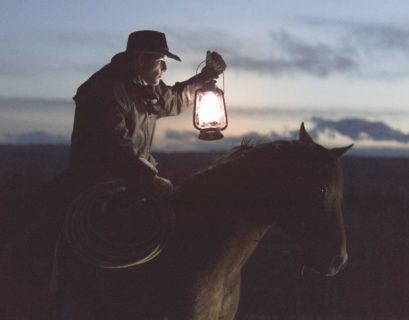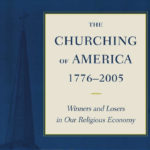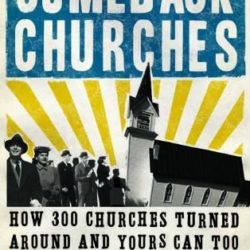By Dr. Darrin J. Rodgers, J.D.
Can rural churches and ministers play a significant role in the growth of Christianity in America? If history is an indicator, the answer is a resounding yes.
The most significant economic turmoil in modern history was the Great Depression (1929-1939), which devastated many segments of American Christianity. Historian Mark Noll observed that mainline Protestants faced economic uncertainties and theological uncertainties as liberal theology had begun to replace historic Christian beliefs. Many mainline congregations, schools, and ministries closed or drastically cut back. Institutions funded by endowments that disappeared with the Wall Street crash were running off fumes of the past.
However, a noticeable exception to the decline of religious institutions in the 1930s, evangelical and Pentecostal churches made significant gains. According to Noll, these “sectarian” churches “knew better how to redeem the times.”[1]
Religious censuses conducted by the United States Government in 1926 and 1936 revealed that the number of Assemblies of God (AG) churches almost quadrupled, and membership tripled during that ten-year period.[2] Significantly, much of that growth occurred in rural America.
An analysis of these statistics reveal some helpful insights about rural ministry. The government defined an “urban” area as a city or other incorporated area with a population of at least 2,500 people. Rural areas were defined as those areas not classified as urban.
- Rural church membership grew significantly despite a mass migration away from rural areas. Total rural church membership grew at a higher rate (360%) than urban church membership (280%) from 1926 to 1936. When other social institutions struggled, rural churches helped provide stability and spiritual solutions in communities during social upheaval. Tough times can provide great ministry opportunities.
- Pentecostals left rural areas in the Midwest and South, migrating to the West and North, and started congregations in almost every major city. In the providence of God, the painful social dislocation of the 1930s helped bring about the rapid spread of Pentecostalism. Like pollen scattered by a strong wind, Pentecostal refugees from rural areas planted churches wherever they happened to land.
- Rural churches tended to be smaller than urban churches. In 1926, rural churches averaged 45 members, and urban churches
averaged 100 members. This is not surprising, as fewer people live in rural areas. - The growth of God’s Kingdom does not necessarily mean that individual churches get larger. The number of AG members and churches grew at an astounding rate (tripling and almost quadrupling) from 1926 to 1936. However, the average size of churches shrank slightly; rural churches declined from 45 to 36 members, and urban churches declined from 100 to 86 during that ten-year period. Aggressive church planting and evangelism helped expand the Church, but this does not always translate into bigger numbers for the local church, as people leave existing churches to start new ones. It remains essential to be “Kingdom-minded,” prioritizing the Church and not solely on the local congregation.
- Bible colleges helped lay the foundation for the expansion of the AG. Of today’s seven largest Assemblies of God colleges and universities, four started during the Great Depression: North Central University (1930), Northwest University (1934), Southeastern
University (1935), and Valley Forge Christian College (1939). Students from these schools dispersed; some held high-profile evangelistic campaigns, but most started small. Countless rural outstations and Vacation Bible Schools took root and developed into churches. - Women ministers contributed to a significant portion of the growth in the 1930s. In North Dakota, women pioneered 29% of all AG
churches and outstations through 1940.[3] Established congregations generally sought male pastors, leaving women with less desirable ministry opportunities. Many early young women ministers traveled in pairs. Typically, one preached, and the other led singing. The prospect of seeing female clerics often attracted crowds of curious onlookers in new Pentecostal fields. Women ministers proved their mettle by venturing into tough fields and achieved solid results.
Faced with the social chaos and financial uncertainty of the Great Depression, it would have been understandable if AG leaders had not invested in church planting, missions, and education. However, the difficult times reminded believers of the ripe harvest fields and Christ’s imminent second coming. AG pastors and members viewed the economic crisis as an opportunity to engage in ardent prayer and great personal sacrifice to advance the Kingdom of God.
These strong attitudes among rural pastors and members helped to lead the growth of the AG during the nation’s greatest economic upheaval.
[1] Mark A. Noll, A History of Christianity in the United States and Canada (Grand Rapids: Eerdmans, 1992), 432.
[2] Bureau of the Census, Religious Bodies: 1926, Summary and Detailed Tables, vol. 2 (Washington, DC: United States Government Printing
Office, 1930), 60; Bureau of the Census, Religious Bodies: 1936, Summary and Detailed Tables, vol. 2 (Washington, DC: United States Government Printing Office, 1941), 63.
[3] Darrin J. Rodgers, Northern Harvest: Pentecostalism in North Dakota (Bismarck, ND: North Dakota District Council of the AG, 2003), 42.

















